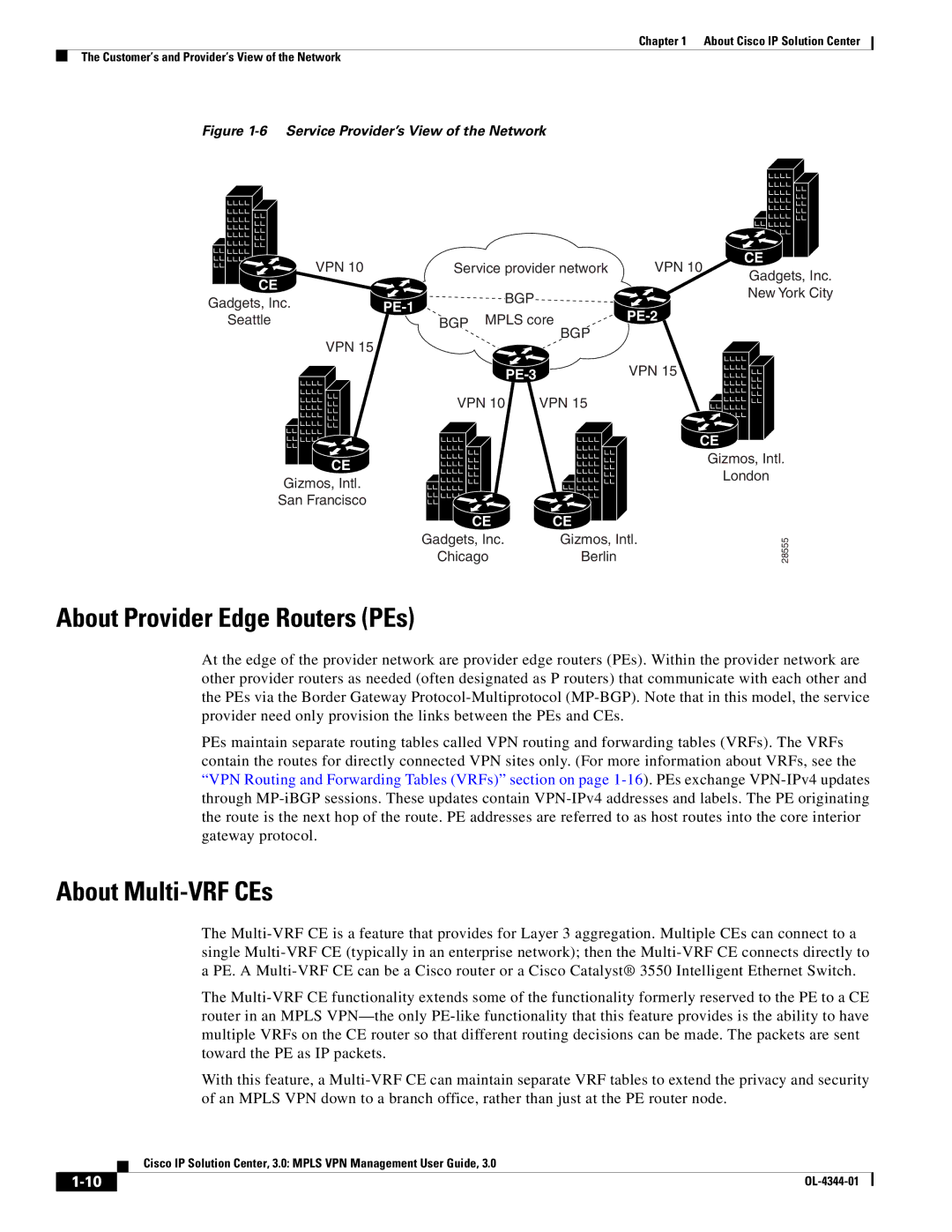
Chapter 1 About Cisco IP Solution Center
The Customer’s and Provider’s View of the Network
Figure 1-6 Service Provider’s View of the Network
VPN 10
CE
Gadgets, Inc. |
|
Seattle
VPN 15
CE |
Gizmos, Intl.
San Francisco
Service provider network | VPN 10 | CE | |||
Gadgets, Inc. | |||||
|
|
|
| ||
| BGP |
|
| New York City | |
|
|
|
| ||
BGP | MPLS core |
| |||
|
| BGP |
|
| |
|
| VPN 15 |
| ||
VPN 10 | VPN 15 |
|
| ||
|
|
| CE | ||
|
|
|
| Gizmos, Intl. | |
|
|
|
| London | |
| CE | CE |
|
| |
Gadgets, Inc. | Gizmos, Intl. |
Chicago | Berlin |
28555
About Provider Edge Routers (PEs)
At the edge of the provider network are provider edge routers (PEs). Within the provider network are other provider routers as needed (often designated as P routers) that communicate with each other and the PEs via the Border Gateway
PEs maintain separate routing tables called VPN routing and forwarding tables (VRFs). The VRFs contain the routes for directly connected VPN sites only. (For more information about VRFs, see the “VPN Routing and Forwarding Tables (VRFs)” section on page
About Multi-VRF CEs
The
The
With this feature, a
Cisco IP Solution Center, 3.0: MPLS VPN Management User Guide, 3.0
| ||
|
